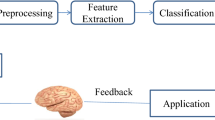Abstract
The development of hardware platforms for artificial neural networks (ANN) has been hindered by the high consumption of power and hardware resources. In this paper, we present a methodology for ANN-optimized implementation, of a learning vector quantization (LVQ) type on a field-programmable gate array (FPGA) device. The aim was to provide an intelligent embedded system for real-time vigilance state classification of a subject from an analysis of the electroencephalogram signal. The present approach consists in applying the extension of the algorithm architecture adequacy (AAA) methodology with the arithmetic accuracy constraint, allowing the LVQ-optimized implementation on the FPGA. This extension improves the optimization phase of the AAA methodology by taking into account the operations wordlength required by applying and creating approximative-wordlength operation groups, where the operations in the same group will be performed with the same operator. This LVQ implementation will allow a considerable gain of circuit resources, power and maximum frequency while respecting the time and accuracy constraints. To validate our approach, the LVQ implementation has been tried for several network topologies on two Virtex devices. The accuracy–success rate relation has been studied and reported.












Similar content being viewed by others
References
Basheer IA, Hajmeer M (2000) Artificial neural networks: fundamentals, computing, design, and application. J Microbiol Methods 43:3–31. doi:10.1016/S0167-7012(00)00201-3
Paliwal M, Kumar UA (2009) Neural networks and statistical techniques: a review of applications. Expert Syst Appl 36:2–17. doi:10.1016/j.eswa.2007.10.005
Ukil A (2007) Intelligent systems and signal processing in power engineering, 1st edn. Springer, New York. doi:10.1007/978-3-540-73170-2
Kugler M, Lopes HS (2002) Using a chain of LVQ neural networks for pattern recognition of EEG signals related to intermittent photic-stimulation. In: Proceedings of the VII Brazilian symposium on neural networks (SBRN’02), pp 173–177. doi:10.1109/SBRN.2002.1181465
Trutschel U, Sommer D, Aguirre A, Dawson T, Sirois B (2006) Alertness assessment using data fusion and discrimination ability of LVQ-networks. In: Knowledge-based intelligent information and engineering systems lecture notes in computer science, vol 4253, pp 1264–1271. doi:10.1007/11893011_160
Vuckovic A, Radivojevic V, Chen AC, Popovic D (2002) Automatic recognition of alertness and drowsiness from EEG by an artificial neural network. Med Eng Phys 24(5):349–360. doi:10.1016/S1350-4533(02)00030-9
Ben Khalifa K, Bedoui MH, Dogui M, Alexandre F (2004) Analysis of vigilance states by neural networks. In: Proceedings of international conference on information and communication technologies: from theory to applications, pp 429–430. doi:10.1109/ICTTA.2004.1307815
Kugler M, Lopes HS (2007) A configware approach for the implementation of a LVQ Neural network. Int J Comput Intell Res 3:21–25. doi:10.5019/j.ijcir.2007.79
Boubaker M, Akil M, Ben Khalifa K, Grandpierre T, Bedoui MH (2010) Implementation of an LVQ neural network with a variable size: algorithmic specification, architectural exploration and optimized implementation on FPGA devices. Neural Comput Appl. doi:10.1007/s00521-009-0296-5
Kugler M, Hishida T, Kuroyanagi S, Iwata A (2010) A novel approach for hardware based sound localization. In: Artificial neural networks—ICANN 2010 lecture notes in computer science, vol 6352, pp 490–499. doi:10.1007/978-3-642-03040-6_105
Boubaker M, Ben Khalifa K, Girau B, Dogui M, Bedoui MH (2008) On-line arithmetic reprogrammable hardware implementation of lvq neural network for alertness classification. Int J Comput Sci Netw Secur 8:260–266. http://paper.ijcsns.org/07_book/200803/20080338.pdf
Kohonen T (2001) Self-organizing maps. Springer, Berlin. ISBN: 978-3-540-67921-9 (Print) 978-3-642-56927-2 (Online). doi:10.1007/978-3-642-56927-2
Grandpierre T, Sorel Y (2003) From algorithm and architecture specifications to automatic generation of distributed real-time executives: a seamless flow graphs transformations. Proc Memcode 2003:123–133. doi:10.1109/MEMCOD.2003.1210097
Kaouane L, Akil M, Sorel Y, Grandpierre T (2004) A methodology to implement real-time applications onto reconfigurable circuits. J Supercomput 30:283–301. doi:10.1023/B:SUPE.0000045213.82276.8e
Niang P, Grandpierre T, Akil M (2007) Implementing real-time algorithms by using the AAA prototyping methodology. In: Embedded system design: topics, techniques and trends, IFIP—The International Federation for Information Processing, vol 231, pp 27-36. doi:10.1007/978-0-387-72258-0_3
Blaiech AG, Ben Khalifa K, Boubaker M, Bedoui MH (2011) New approach for implementing a FIR filter based on AAA methodology. J Comput 3:65–67
Blaiech AG, Ben Khalifa K, Boubaker M, Bedoui MH (2010) Multi-width fixed-point coding based on reprogrammable hardware implementation of a multi-layer perceptron neural network for alertness classification. In: Proceeding of the 10th international conference on intelligent systems design and applications (ISDA), Cairo, Egypt, 2010, pp 610–614. doi:10.1109/ISDA.2010.5687196
Blaiech AG, Ben khalifa K, Boubaker M, Bedoui MH (2012) Implementation of a multi-layer perceptron neural networks in multi-width fixed point coding. Int J Model Optim 2:280–283. doi:10.7763/IJMO.2012.V2.127
Constantinides GA, Cheung PYK, Luk W (2003) Wordlength optimization for linear digital signal processing. IEEE Trans Comput Aided Design 22:1432–1442. doi:10.1109/TCAD.2003.818119
Menard D, Herve N, Sentieys O, Nguyen HN (2012) High-level synthesis under fixed-point accuracy constraint. J Electr Comput Eng ID 906350, p 14. doi:10.1155/2012/906350
Cmar R, Rijnders L, Schaumont P, Bolsens I (1999) A methodology and design environment for DSP ASIC fixed point refinement. In: Proceedings of the design automation and test in Europe conference (DATE 99), pp 271–276. doi:10.1109/DATE.1999.761133
Cantin MA, Savaria Y, Lavoie P (2002) A comparison of automatic word length optimization procedures. In: Proceedings of the IEEE international symposium on circuits and systems (ISCAS ‘02), vol 2, pp 612–615. doi:10.1109/ISCAS.2002.1011427
Karypis G, Han EH, Kumar V (1999) Chamelon: a hierarchical clustering algorithm using dynamic modeling. Computers 32:68–75. doi:10.1109/2.781637
Author information
Authors and Affiliations
Corresponding author
Rights and permissions
About this article
Cite this article
Blaiech, A.G., Ben Khalifa, K., Boubaker, M. et al. LVQ neural network optimized implementation on FPGA devices with multiple-wordlength operations for real-time systems. Neural Comput & Applic 29, 509–528 (2018). https://doi.org/10.1007/s00521-016-2465-7
Received:
Accepted:
Published:
Issue Date:
DOI: https://doi.org/10.1007/s00521-016-2465-7




